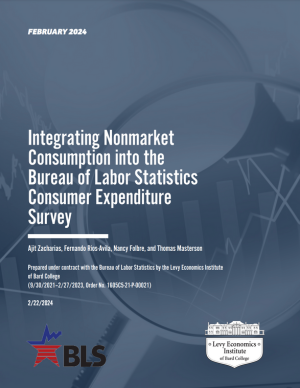
Publications
In the Media
| May 2014
Income Inequality Undermines Growth
By Barry Elias
MoneyNews, May 8, 2014. All Rights Reserved.
Future rises in income inequality will lead to a prolonged period of anemic economic growth and high unemployment.
Income for the bottom 90 percent of households has stagnated during the past 35 years. Strong economic activity in the 1990s and 2000s was largely generated by consumption that was financed by borrowing. The resulting high levels of debt relative to income precipitated the financial and economic crisis.
Since 2008, the bottom 90 percent of households have deleveraged, thereby reducing their debt-to-disposable-income ratio. This ratio for the top 10 percent has remained relatively stable. Should this deleveraging trend continue, by 2017, economic growth will be 1.7 percentage points lower than the post-recession period, and unemployment will rise 1.3 percentage points to 7.6 percent, according to the Levy Economics Institute.
Future economic growth is unlikely to arise from the activities of the top 10 percent of households. Their consumption levels tend to remain relatively stable, and their investments are driven by short-term arbitrage opportunities of financial assets — not long-term direct investment in businesses that generate strong employment and income growth.
Coupled with weak foreign demand and restrictive government fiscal policy, future economic growth may be driven by domestic deficits. This burden will fall primarily on the bottom 90 percent in the private sector and exacerbate income disparity. However, as debt-to-income levels rise, a financial and economic crisis becomes more probable.
The only viable solution to this economic conundrum is greater income equality.
Future rises in income inequality will lead to a prolonged period of anemic economic growth and high unemployment.
Income for the bottom 90 percent of households has stagnated during the past 35 years. Strong economic activity in the 1990s and 2000s was largely generated by consumption that was financed by borrowing. The resulting high levels of debt relative to income precipitated the financial and economic crisis.
Since 2008, the bottom 90 percent of households have deleveraged, thereby reducing their debt-to-disposable-income ratio. This ratio for the top 10 percent has remained relatively stable. Should this deleveraging trend continue, by 2017, economic growth will be 1.7 percentage points lower than the post-recession period, and unemployment will rise 1.3 percentage points to 7.6 percent, according to the Levy Economics Institute.
Future economic growth is unlikely to arise from the activities of the top 10 percent of households. Their consumption levels tend to remain relatively stable, and their investments are driven by short-term arbitrage opportunities of financial assets — not long-term direct investment in businesses that generate strong employment and income growth.
Coupled with weak foreign demand and restrictive government fiscal policy, future economic growth may be driven by domestic deficits. This burden will fall primarily on the bottom 90 percent in the private sector and exacerbate income disparity. However, as debt-to-income levels rise, a financial and economic crisis becomes more probable.
The only viable solution to this economic conundrum is greater income equality.
Associated Program:
